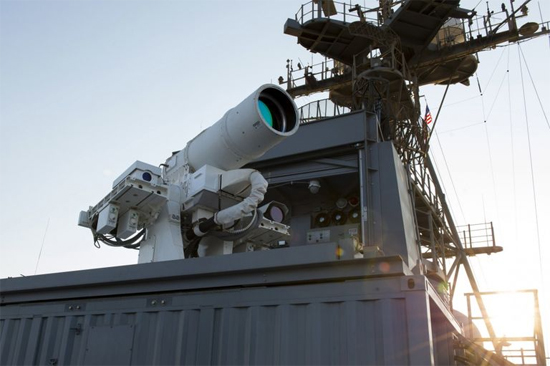The Pentagon (Says It) Is Giving Up On Particle Beam Weapons
The DoD, which showed interest in neutral particle beams earlier this year, now thinks they’re too hard to field anytime soon. Particle beams work by using atomic and subatomic particles to “melt” their target. The Pentagon wanted to use neutral particle beams to shoot down incoming ballistic missiles during takeoff phase.

The Department of Defense is pushing hard into directed energy technologies, particularly lasers, but there’s one weapon that won’t be deployed in the field anytime soon: neutral particle beams (NPBs). Just over a year after announcing a renewed interest into the tech, the Pentagon has decided to shelve research into NPBs, stating that they were “not near term enough.” Translation: even with military funding the services wouldn’t see a particle beam weapon soon enough to make worthwhile.
According to DefenseOne, U.S. Undersecretary of Defense for Research and Engineering Mike Griffin recently told a gathering of defense reporters, “We are deferring work on neutral particle beams, indefinitely. It’s just not near-term enough.” Griffin emphasized however that the Pentagon was still forging ahead with research into lasers and microwave weapons, for use by ground forces, air forces, and in space.
Griffin first brought up possible deployment of particle beams in March 2018, and in March 2019 announced it was aiming for a neutral particle beam test in space sometime in 2023. The Pentagon apparently wants to use it to destroy enemy ballistic missiles shortly after takeoff, when they are most vulnerable, and before multiple nuclear warheads can separate from the launch booster.
The U.S. will continue to research other directed energy weapons, as the Laser Weapon System (LaWS) deployed on the USS Ponce in 2014.
Neutral particle beams are basically “death rays” from science fiction. NPBs involve accelerating streams of atomic or subatomic particles to nearly light speed and shooting them downrange at a target. Once the particles collide with the target, they began to unravel it at the atomic and molecular level, breaking the bonds that create its shape. At a visual level, it would appear that the target is melting. The kinetic energy transferred from the particles to the target also heats it up, contributing to the melting of the target material.
Neutral particle beams have technological and engineering challenges similar to those of other directed energy weapons. NPBs require lots of energy, a mechanism to accelerate and focus the particles or subatomic particles, and another mechanism for aiming them. The Department of Defense, which has seen Russian and Chinese advances in other high tech categories including lasers, rail guns, and hypersonic weapons, needs to push tech out into the field soon and apparently thinks investing in NPBs now won’t get them anywhere anytime soon.
yogaesoteric
September 26, 2019
